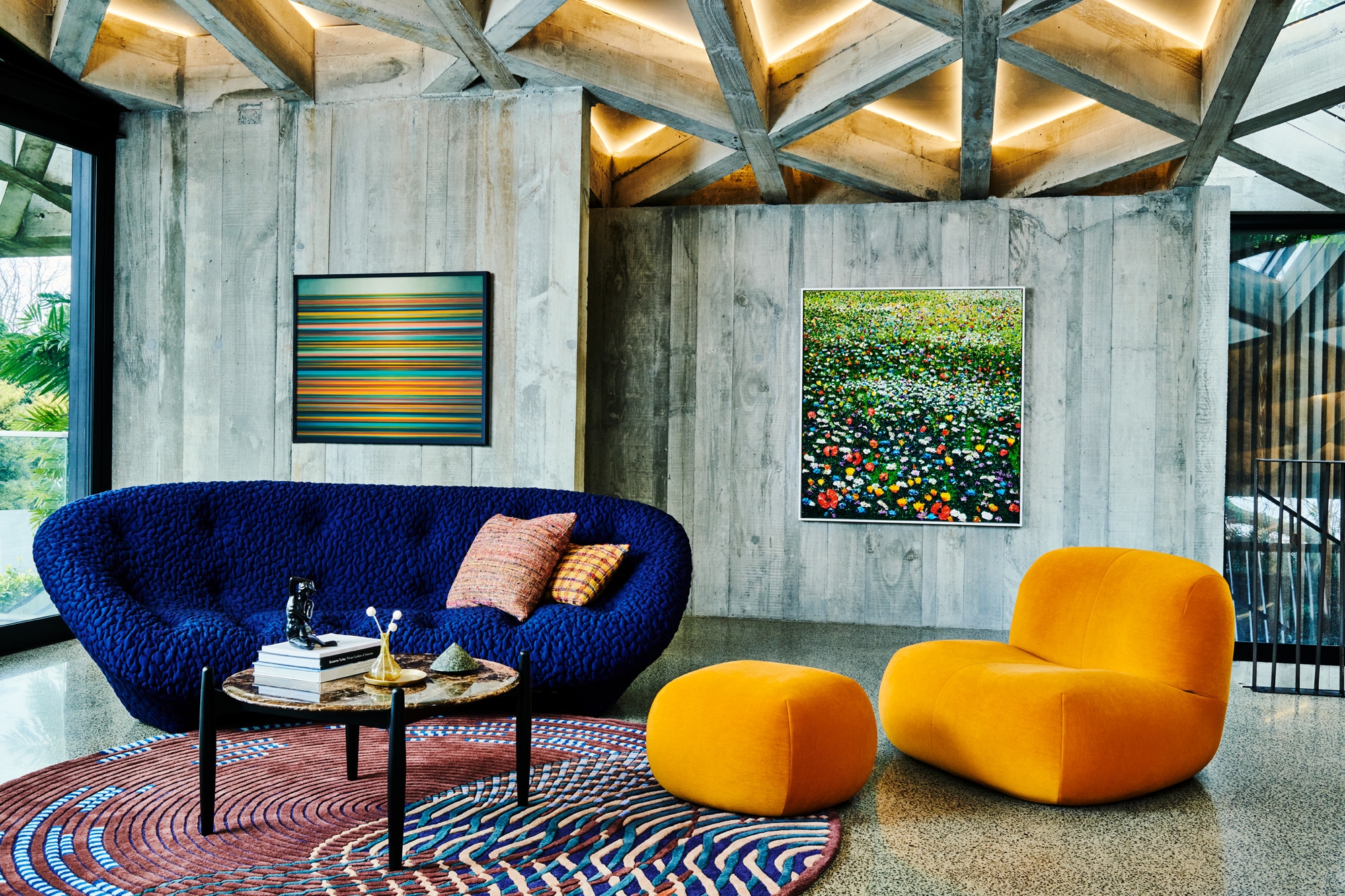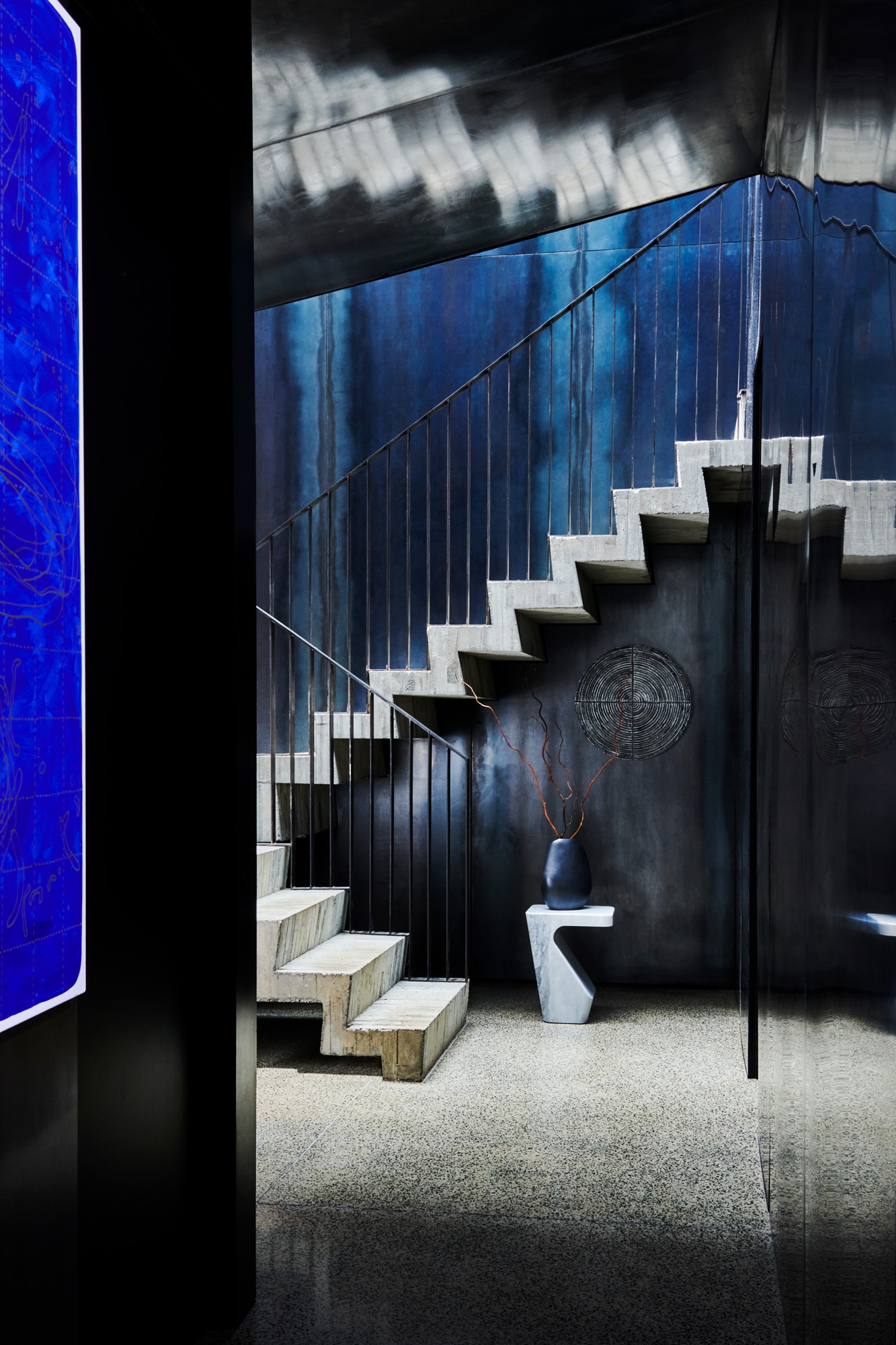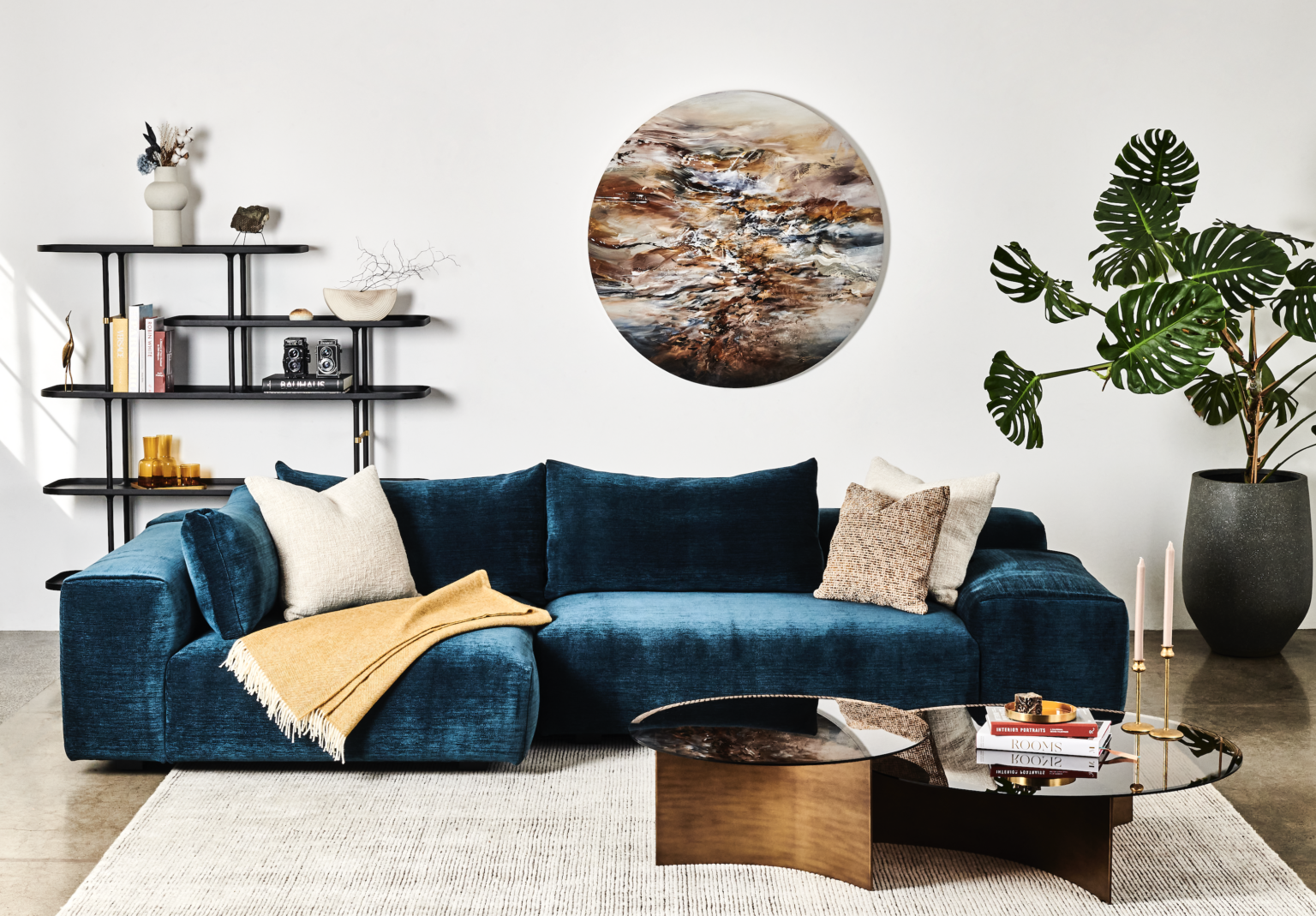Feature article
How to choose art for your home
Five tips to elevate your space.

It may be one of the more subjective elements to your interior design scheme, but one thing we can all agree on is that art will elevate your space and can even change the entire dynamic of a room.
Whether you’re looking to make a bold statement or just to add a personal touch to your space, there are countless benefits to incorporating art in its many forms into your home.
Here are five tips to choose art that will bring life and character to your walls.
Cover image: A vibrant array of art, furniture and furnishings come together in this contemporary home to create an eclectic yet welcoming scheme. Here, bold, vibrant pieces were chosen, (Natural Colourfield, Stephen Howard, 2021; The Honeymooners’ Bed, Peter Hackett, 2022) from which pops of colour in the furniture and soft furnishings are echoed.
1. Make it personal
While it doesn’t have to be everyone’s cup of tea, the art you choose for your home should at least appeal to you. Choose pieces that you like or feel an affinity for and don’t be tempted to spend a fortune if it’s not in your budget. Prints and original works from local artists are all good starts from which to build your collection.
Family photographs, too, can be a great source for injecting personality into your home. When placed into a ‘gallery wall’ collection, photographs can add interest to an otherwise underutilised space, such as a stairwell.
A professionally curated gallery wall will not only look good but may also bring a new perspective to your art that you hadn’t considered. A good idea is to engage the services of a professional art hanger, someone who can give you advice on how and where certain pieces should be hung, can even point out where there may be holes in your collection and will definitely make sure your art is displayed at its best.
If you’re confident that you can create your own gallery wall, there are a number of picture hanging calculators available online that will work out the best hanging configuration for your art pieces just through you entering the dimensions of the wall space and of each piece you’re looking to hang.
2. A question of size
Don’t be afraid to commit to a larger piece, even if the room you’re dressing is on the smaller side. A large piece in a small space can serve as a focal point as well as a jumping off point for other elements of the design scheme.
The beauty of a larger piece is that is doesn’t always have be hung on the wall. To create the illusion of higher ceilings, consider drawing inspiration from ‘old-world’ apartment decorating and lean larger pieces against the wall to create a relaxed vibe.
Another option for large-scale pieces is to commission an artist to create a bespoke mural. Not for the faint of heart, a mural in your home is the ultimate form of artistic commitment. If that seems a little OTT, consider some of the modern wallpaper murals on offer.
This dramatic stair is defined by art and colour. Here, Whakapapa Disc #1 by Sally Smith is set against a sculptural table, pieces that work perfectly with the surrounding architectural elements.
3. Placement is key
Let’s face it, the whole point of having art is being able to see it properly. With that in mind, the general rule of thumb for hanging an artwork is that the centre of the piece should sit around eye level for an ‘average-height’ person, or about 1.5-metres from the floor.
Hanging a piece too high on the wall will make the ceiling appear lower than it actually is and create the feeling of the space being overly small. Using paper templates of the piece(s) you’re looking to hang will allow you to create a super-helpful visual guide while you work out the best spot for your artworks.
4. Not just on the walls
Creating an artistic statement in your home doesn’t just have to include paintings and photographs. If the opportunity allows, consider incorporating niches into your walls for the placement of sculptural pieces.
Or even think about moving away from the walls altogether!
A bold and colourful rug will impart a vibrant and energetic atmosphere. Furniture pieces, too — such as a marquetry table — can serve as functional art adding style and character to your space. Mid-century and Art Deco pieces have a lasting style that suits a number of architectural designs.
Think about objets d’art as well, particularly pieces that you may have collected while on holiday. Groupings of smaller objects can be just as aesthetically pleasing as any painting.
Colour and depth, through the use of complementary tones and hues, create a cohesive interior in this understated design scheme. The art chosen, Ethereal, by Tim Jones, brings the elements together.
5. Creating a cohesive whole
Just as a well-considered lighting scheme can add layers to an interior, so too can colour add life and personality. When it comes to adding art to your scheme, it’s important for the colour palette of your art to be cohesive with the aesthetic of the rest of your space.
Consider how you would like the art to integrate with the overall styling and find a piece that has hues evident in the furniture and textiles that share the space. As a general rule, select complementary colours and avoid too many clashing patterns, as this can be overwhelming, particularly in a small space.
That said, contrast is not necessarily a bad thing and doesn’t need to be entirely ruled out. Pop Art pieces are a great example of bold contrasts, as is graffiti art, both of which can result in highly effective interior designs.
Whatever the form, art has been an essential element of interior decorating for centuries and is the perfect way to add personality and style to your space.
Author
Discover More
Search
Other articles you might like









